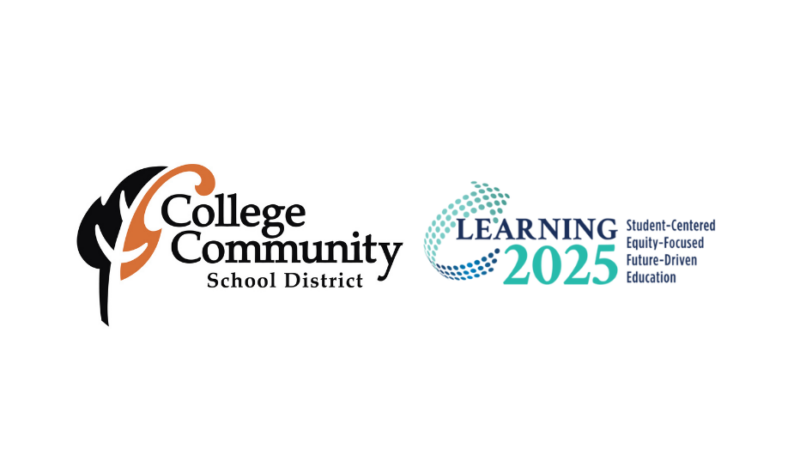
In a bold effort toward a holistic redesign of our nation’s schools, College Community Schools has joined the Learning 2025 network of demonstration systems, a collaborative network of districts to help advance student-centered, equity-focused, future-driven education, administered by AASA, The School Superintendents Association.
Approximately 60 “demonstration systems” represent a collection of forward-leaning urban, suburban and rural districts serving as national models to help guide and reposition partner districts efficiently by sharing successful practices and successes, as well as challenges.
“Serving as a demonstration site by participating in this initiative is an honor for the College Community School District,” said Dr. Doug Wheeler, Superintendent of Schools. “We look forward to working with other school districts from across the country to learn more about their strategic improvement efforts. In addition, our staff will be able to network with peers nationwide, and share strategic ideas and winning solutions in our collective effort to strengthen our communities and raise student outcomes.”
“Our goal is to galvanize and synergize thought leaders from all sectors to emerge from the pandemic in better shape than they were before,” said Daniel A. Domenech, Executive Director, The School Superintendents Association (AASA). “This initiative will ensure that educators are empowered and equipped to meet whole learners’ needs by personalizing and customizing instruction involving students in designing their own learning and coordinating resources to support ALL children’s overall growth and well-being.”
The AASA Learning 2025: National Commission on Student-Centered, Equity-Focused, Future-Driven Education, recommended essential principles for school system redesign. The recommendations, which include the creation of demonstration districts, are found in the commission’s report, An American Imperative: A New Vision of Public Schools.
“This report contains a blueprint to empower school districts to design their plans and meet the specific needs of their learners, educators and communities,” said Kristi Wilson, 2020-21 president of AASA; superintendent, Buckeye Elementary School District, Buckeye, Ariz.; and one of the 27 Learning 2025 Commissioners. “Every district that commits to becoming a demonstration system will receive a personalized consultation and become part of a community of learners who help each other as ‘critical friends’ focused on student learning.”
An AASA Learning 2025 Demonstration System will:
- Receive senior consulting services, personalized engagement and strategic planning support for their district.
- Create a customized action plan tailored to meet the needs of their district.
- Gain a customized dashboard to track their district’s progress and provide real data to community stakeholders.
- Take part in professional learning opportunities, including a complimentary registration to one of AASA’s Leadership Network cohorts.
- Contribute to national research, practice and policy.
- Network, collaborate and learn with school systems that are committed to supporting the whole learner, ensuring anti-marginalization and adopting future-driven practices.
- Move their district forward with research-based recommendations to provide all learners with a bright future.
“The learning 2025 initiative is a tight fit with goals, outcomes and actions of our 10-year strategic plan and post-high school education/training and career readiness efforts,” said Wheeler.
Business and industry have a key role. “This work will be guided by thought leaders from business and industry who are ahead of the curve in terms of implementing innovative strategies and solutions that align to key components of Learning 2025 recommendations,” said Malbert Smith III, CEO, president and co-founder, MetaMetrics; creator of the Lexile and Quantile Frameworks; and Learning 2025 Commissioner. “The team will assist in identifying assessments that could be used to inform and bolster the district’s ability to achieve its priorities and goals for maximizing student achievement.”